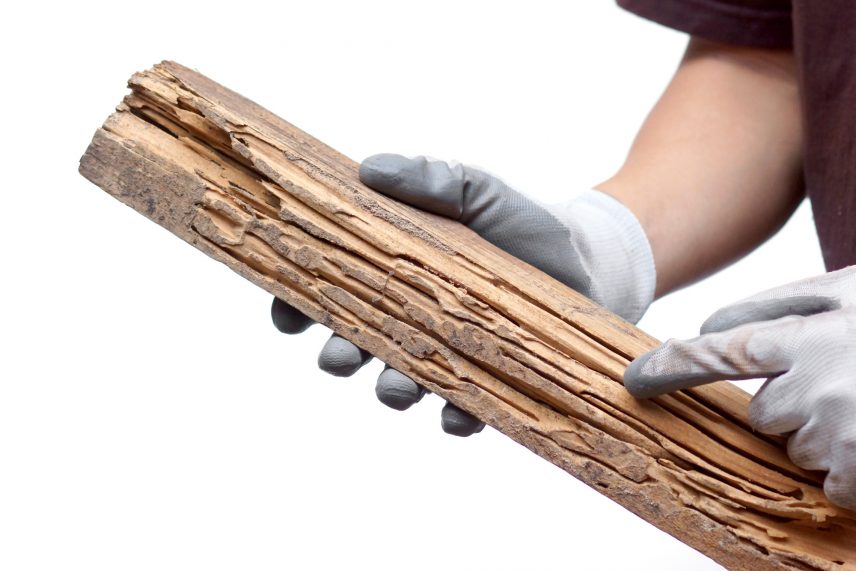Did you know that each year in the United States alone more than 600,000 homes become infested with termites? You might be wondering how bad a termite infestation can possibly be. They’re only insects, aren’t they?
Unfortunately, these insects can cause your entire home to come crumbling down around you if you don’t catch the infestation early. This is because termite damage can eat away at your house from the inside out. While your house might look great from the outside, on the inside, it’s a nightmare waiting to happen.
So, what can you do about a termite infestation? If you think you might have a termite problem, you need to act fast before it becomes a serious problem. Luckily, you’ve clicked on the right article to guide you through the process.
If you keep reading, you’ll learn all about how to find the early signs of termite damage, what to do about existing termites, and what termites can do to your home.
The Early Signs of Termite Damage
Finding termites in your home can be difficult if you don’t know what to look for and especially if you’re not paying attention.
If you have a slight inkling that you might have a termite problem on your hands, make sure you keep an eye out for the following signs. Keep in mind that not dealing with a termite infestation can cost you thousands of dollars in-home repairs. In severe cases, you may have to part with your damaged home altogether.
Termite Droppings
Termite droppings are the most obvious sign of a termite infestation. However, these droppings can be hard to spot if you’re not familiar with their appearance.
In general, termite droppings are either light or dark brown and very small. They often look like tiny wood pieces or sawdust. These droppings may be found anywhere in your home, so it’s important to conduct a thorough search.
You may find them along the borders of walls, corners, or in crawlspaces. Droppings are always located near the site of termite burrows, but they are not inside the burrows. This is because termites like to keep their waste outside of their nests.
Because of this, when you do find termite droppings, they will often be piled up and easy to recognize.
Discarded Wings
If you have a serious termite infestation, a major sign is finding large numbers of abandoned termite wings in well-lit areas. This mainly occurs in the spring when termites are especially active and start to shed.
You may be wondering how you can tell that the wings belong to termites and not another kind of flying insect. What makes termite wings unique is that they are all the same size. If the wings you find are different sizes, you may have a different insect problem such as flying ants.
Warping of Walls and Floors
If termites have been eating away at your house for a while, you may start to notice that parts of your walls or floors are bulging. If you have wood floors, you may note that some of the panels have swelled. Excessive termites behind your walls may even cause paint to bubble.
You can also try knocking on your walls to see if they sound unusually hollow. If you can’t hear anything odd, inspect the walls for cracks. Cracks can be another sign of termites damaging your home from the inside.
How a Termite Infestation Damages Your Home
Now that you’ve learned about the early signs of termite damage and infestation, it’s time to explore what termites can do to damage your home.
Termites love wood because it’s a big part of their diet, so wood damage is the first thing to look out for.
The House Foundation
Termites don’t tend to nest around busy areas. Instead, they prefer, dark, small, and secluded areas such as wooden crawlspaces and foundations. If termites infest your foundation first, this is an immediate problem. If your foundation becomes unstable, living in your home could become a serious health hazard.
In severe cases, termites have been known to cause floors and ceilings to collapse. This is serious home damage and can be very expensive to repair which is why it’s important to catch your termite problem before it goes too far.
If you have a crawlspace, be sure to check it regularly to ensure termites are not making a home there. If you do not have a crawlspace, make sure to inspect the foundation of your home or parts of your home’s exterior that may contain wood.
Walls and Floors
From your foundation, termites often migrate into the walls and floors of your home. Termites love to burrow in canal-like or maze-like formations in wood. If you discover a wall with these odd formations, you may have a termite infestation on your hands even if you don’t see any termites.
This is because the termites may have moved to a different part of your home by the time you discover any trace of them. Obvious signs of termite damage can take the form of buckling ceilings and cracked doorframes.
The beams supporting your ceilings and walls may have also been devoured by termites. If these essential supports are destroyed, your home may not be safe to live in. Luckily, as long as the infestation is stopped in time with the help of professional pest control services, repairs can be made and you can live in your home again without worry.
As long as you schedule regular termite home inspections, you’ll never need to worry about a termite problem ruining your house.
Why Your Infestation Is Urgent
Now that you’re familiar with the signs of termite damage and what termite damage can do to your home, you know what to look out for. Once you realize you have a termite problem, don’t hesitate to call a professional pest control service.
To learn more about pest control services, contact us here.


